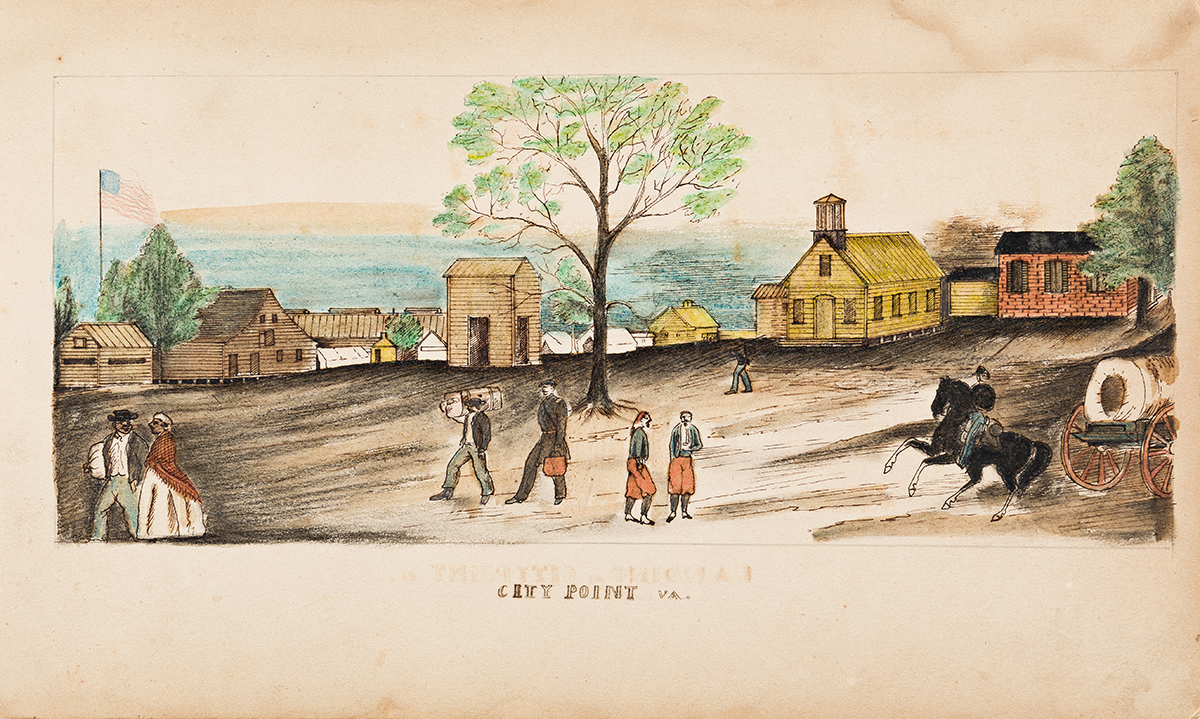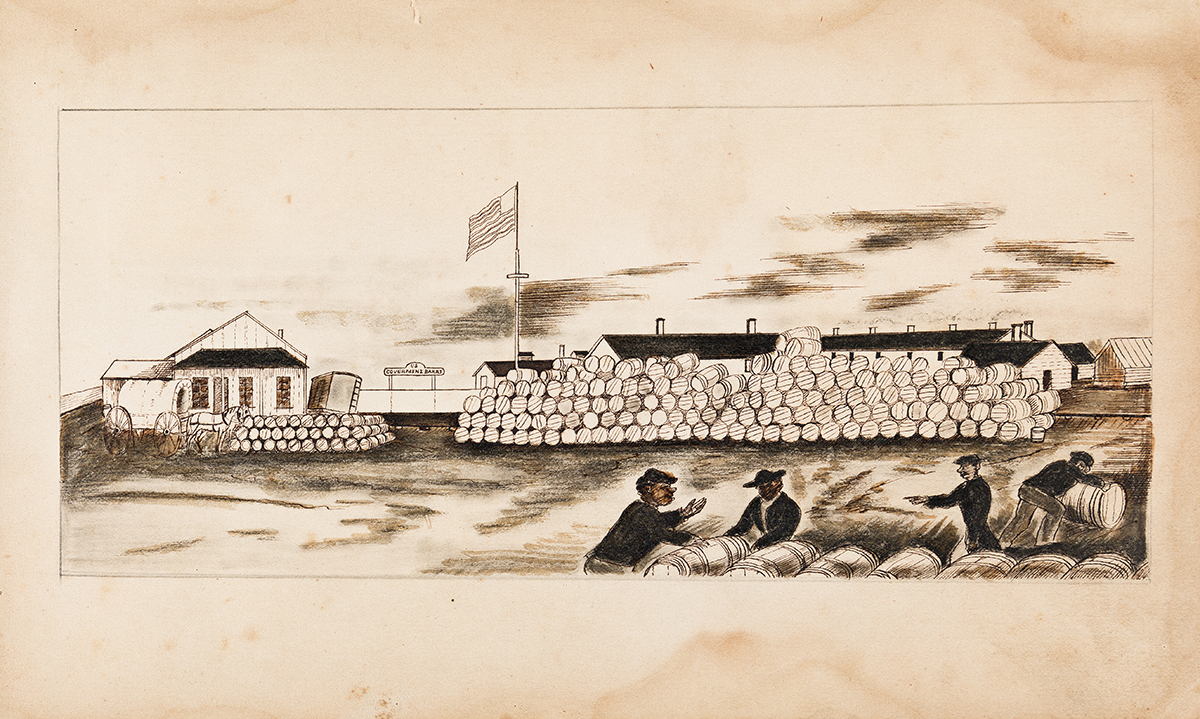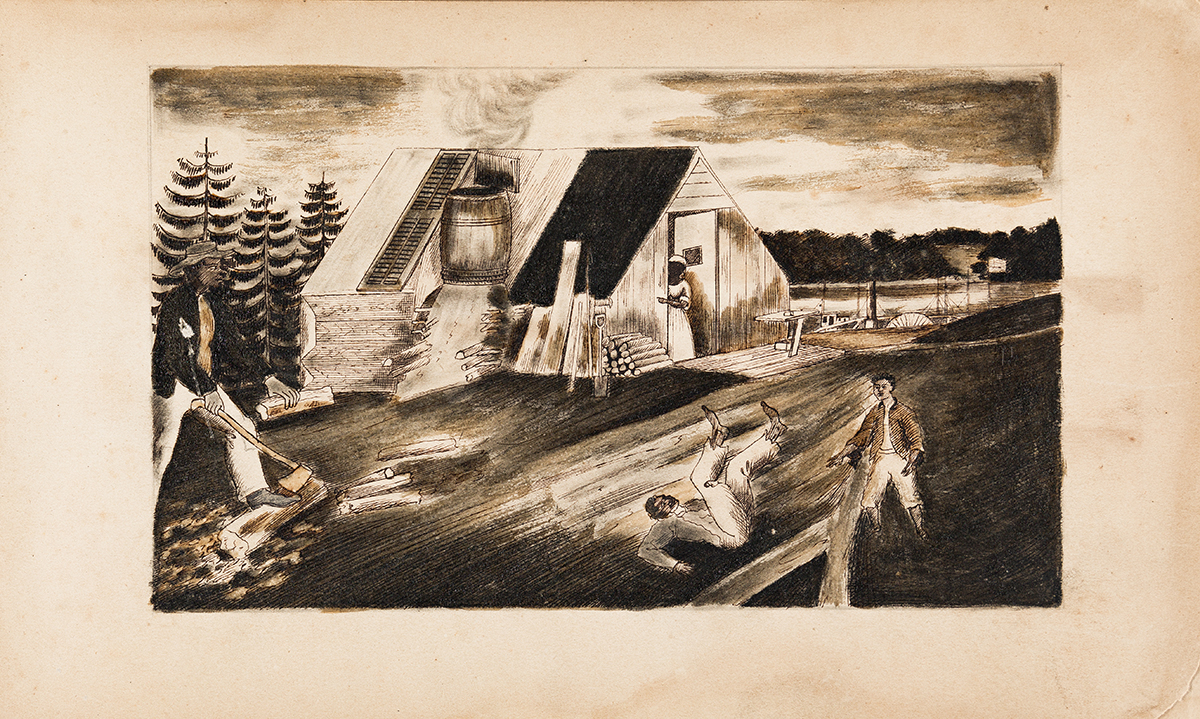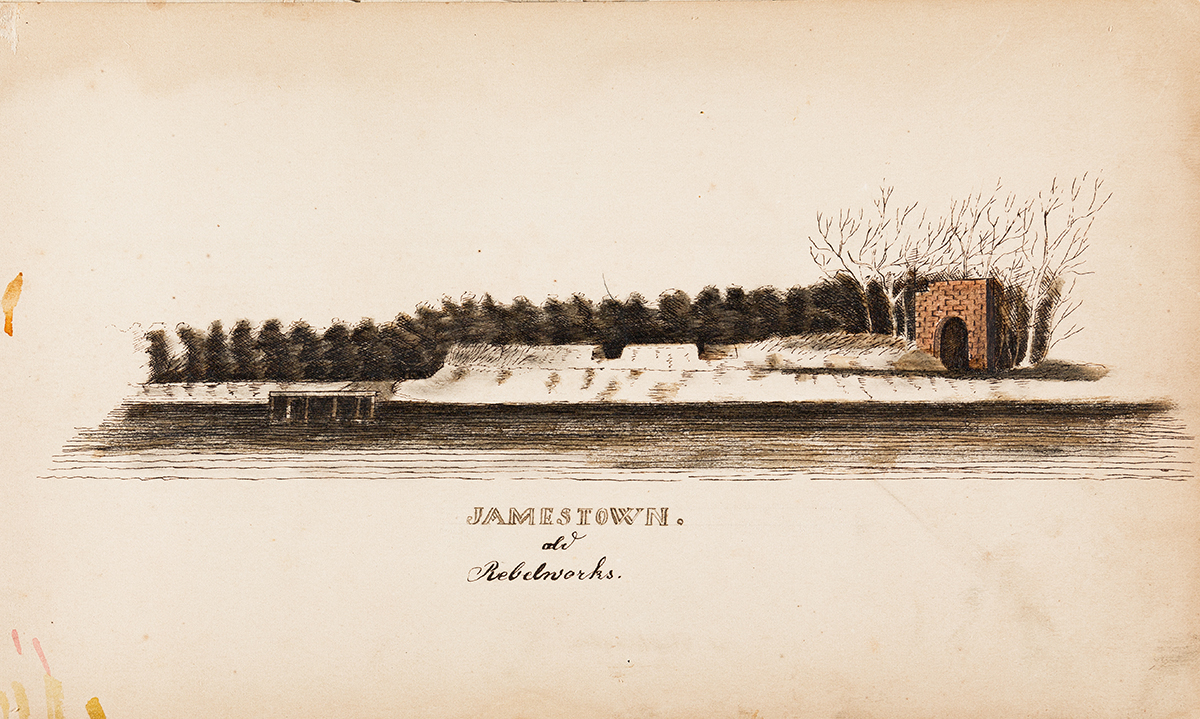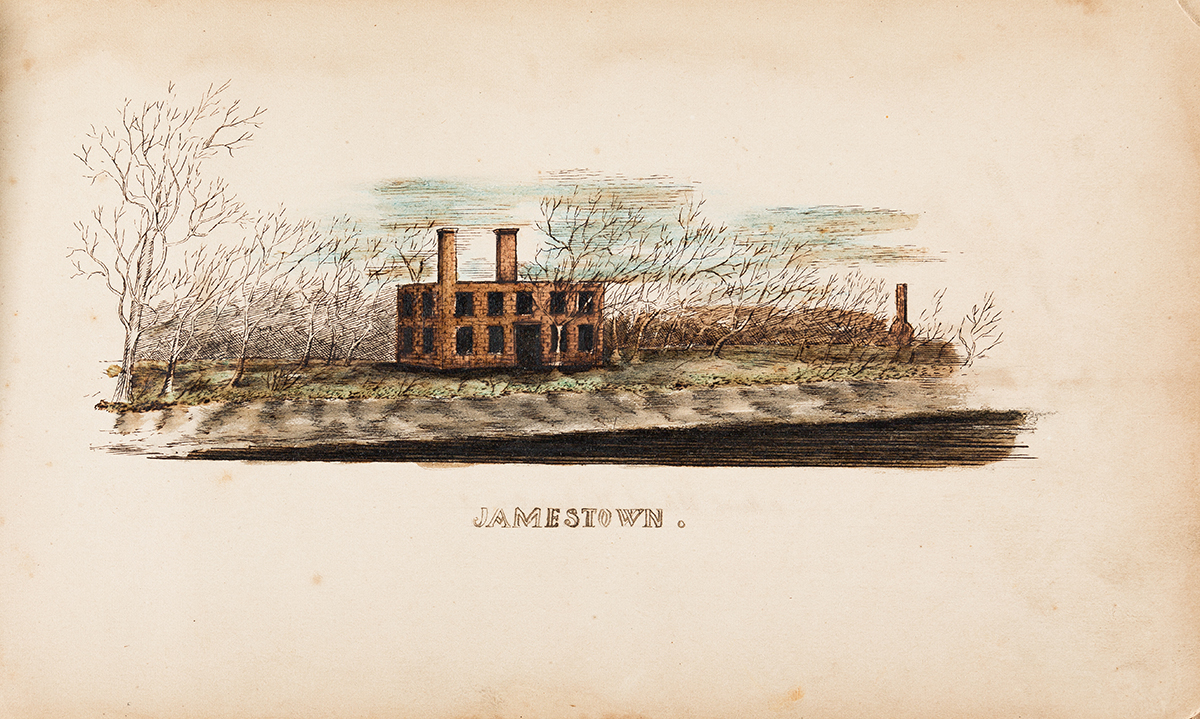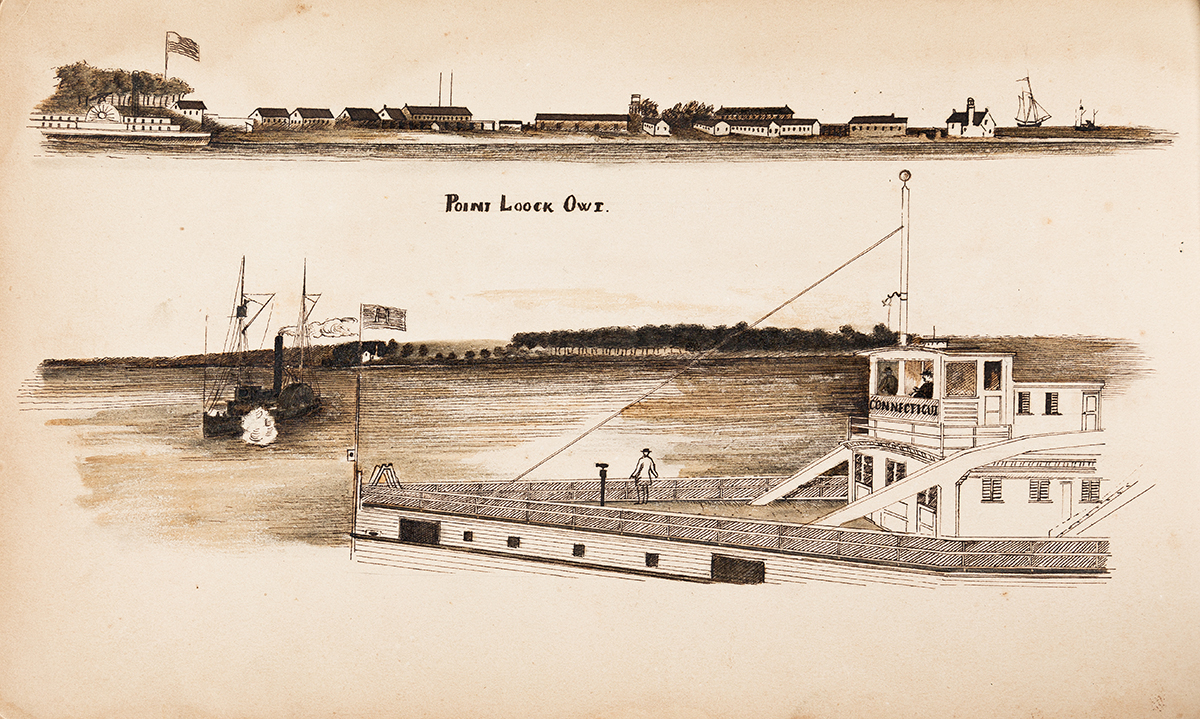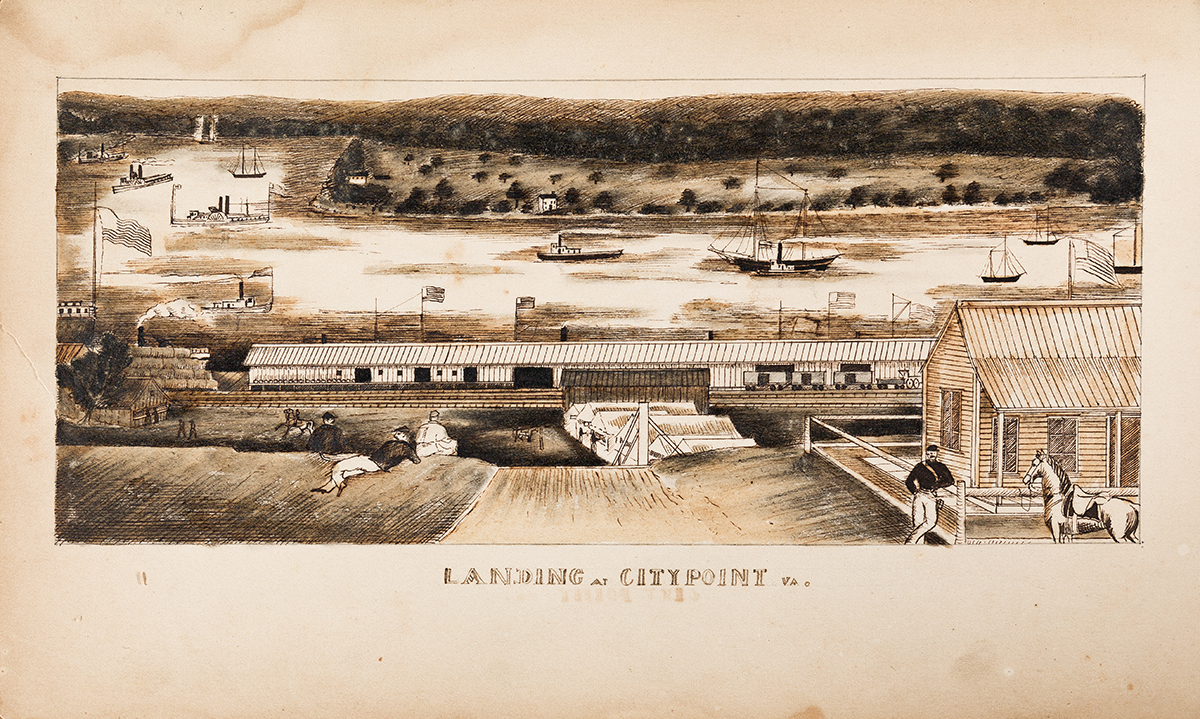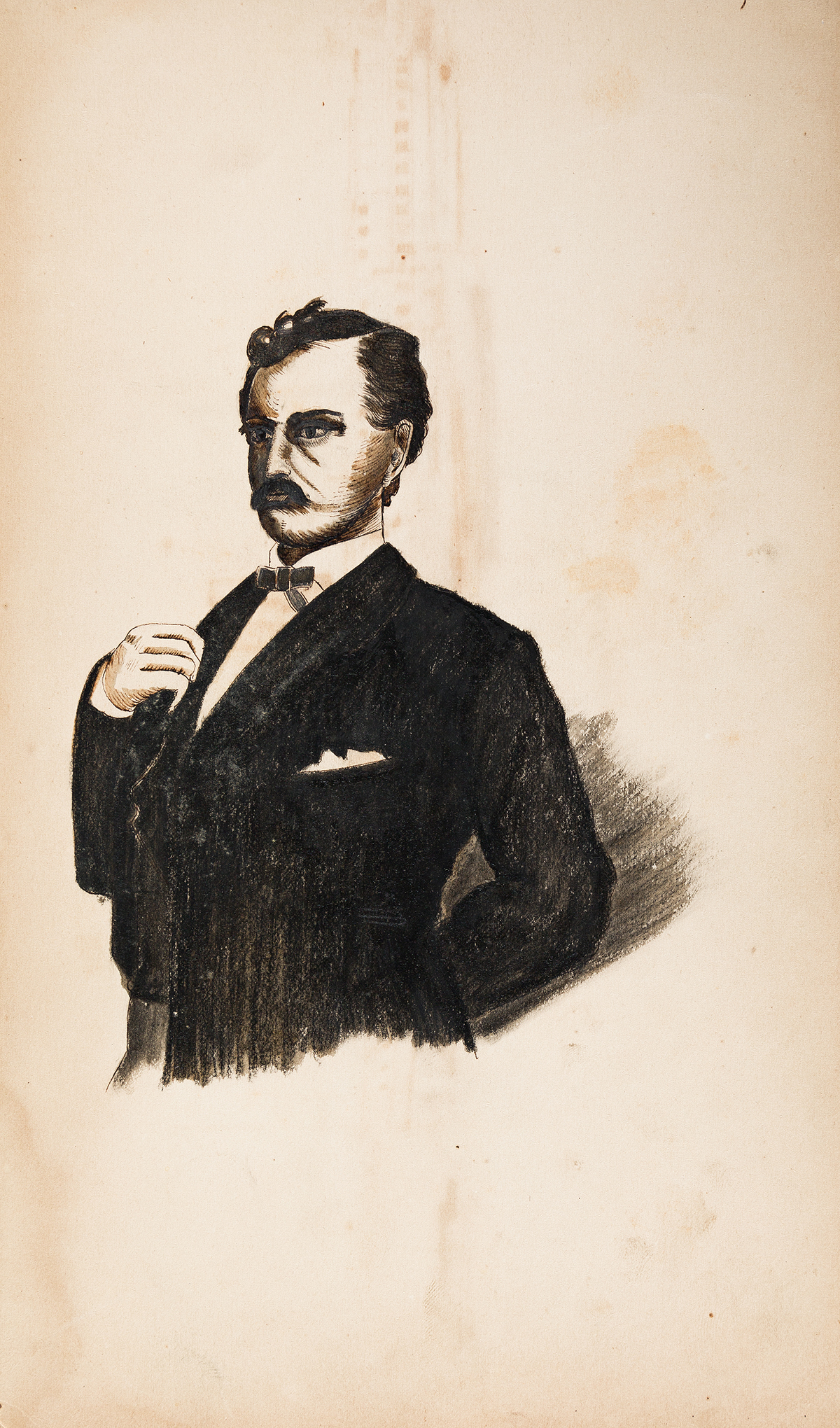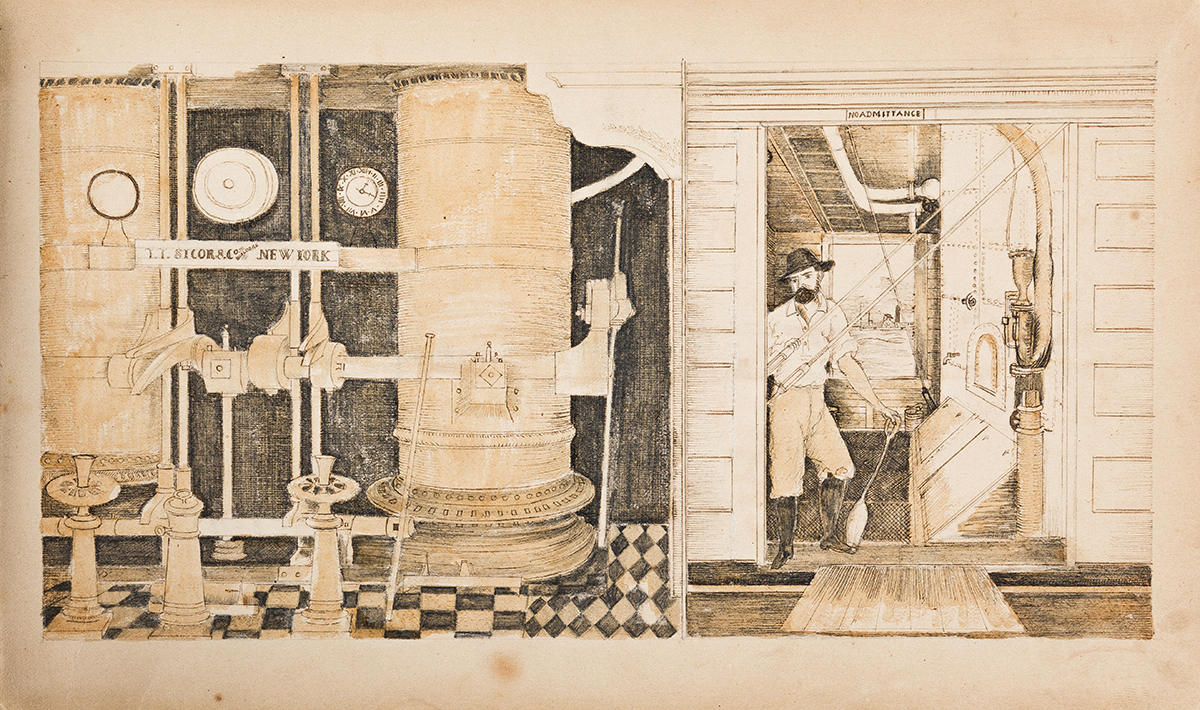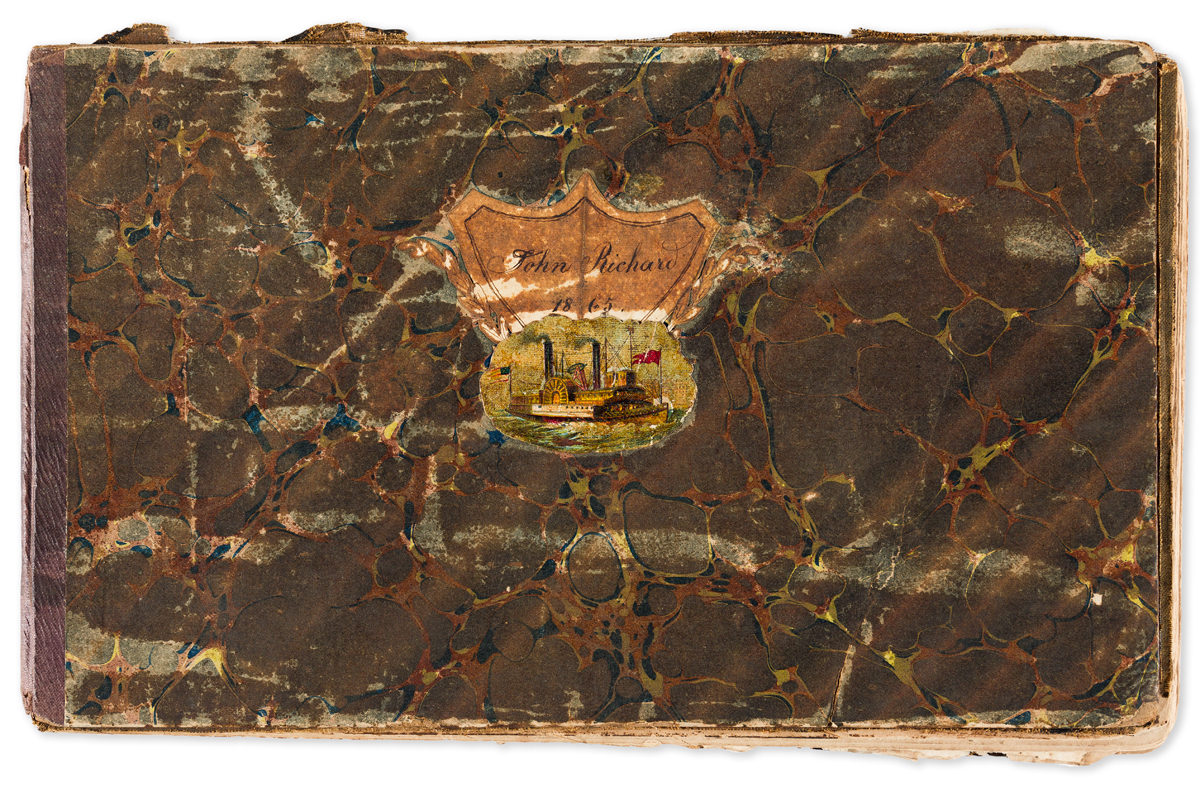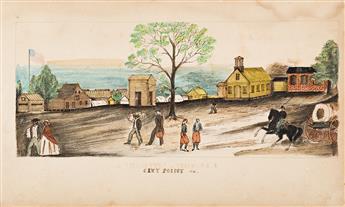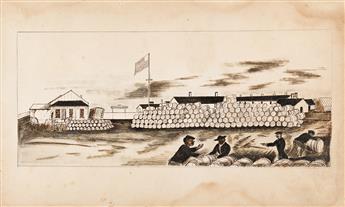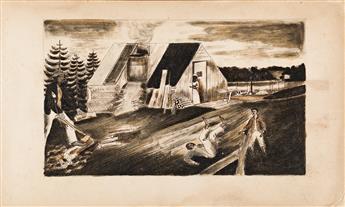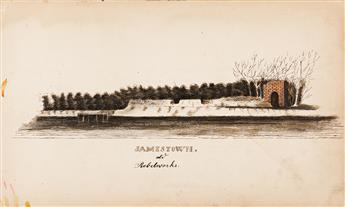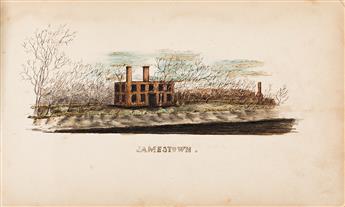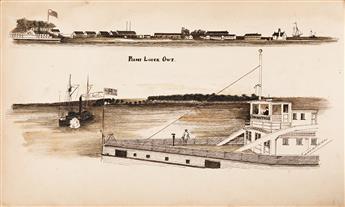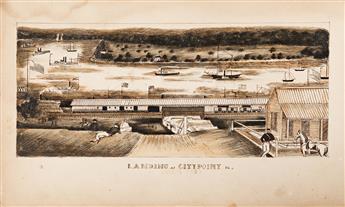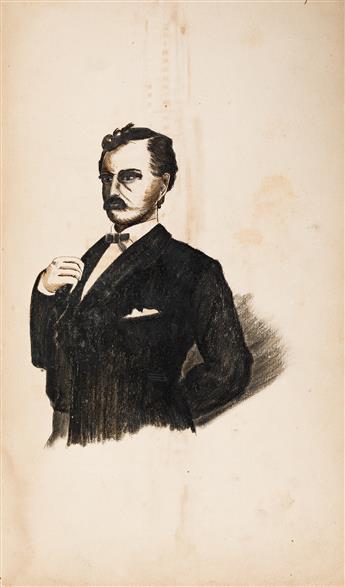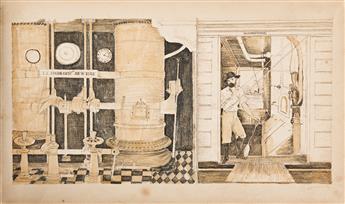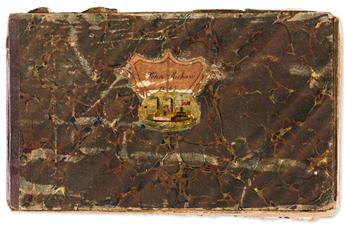Sale 2546 - Lot 51
Unsold
Estimate: $ 25,000 - $ 35,000
(CIVIL WAR--ART.) John Richard. Sketchbook kept by a well-known soldier/artist during the last months of the war. 55 ink and wash drawings (15 of them colored) on 30 leaves. Oblong 4to, 6 1/2 x 11 inches, original cloth-backed marbled paper boards, worn, with label reading "John Richard 1865" and color vignette of a steamship on front board; moderate wear, foxing, and dampstaining to contents. Vp, 1865
Additional Details
John Richard (1831-1889), also known as Rychard or Richards, emigrated from Switzerland to the United States in 1854. He settled in western New York; the 1860 census found him in the town of Webster near Rochester, where he worked as a day laborer and claimed only $80 as his personal estate. He enlisted from nearby West Walworth in December 1861 in the 59th New York Infantry, as John Rychard. After being wounded at Antietam in September 1862, he was sent to a Union hospital in Chestnut Hill, PA, where he first became known for his art, sketching numerous scenes of Germantown.
Richard never fully recovered from his injuries, and was transferred in February 1864 to the Veteran Reserve Corps, 135th Company, 2nd Battalion. During the closing months of the war, he created the present sketchbook. He apparently had the opportunity to travel freely; the volume includes views of Washington, Alexandria, Baltimore, Annapolis, Hampton Roads, Appomattox, and Mount Vernon. The massive Union base at City Point, VA (a major supply hub, and site of Depot Field Hospital) appears frequently. Numerous naval steamships are depicted (one with a cargo of rebel prisoners on deck), as well as forts, hospitals, and headquarters. Two of the drawings depict African Americans. In one, a group of soldiers roll barrels in front of the U.S. Government Bakery. In another, a family of 4 is seen outside a large cabin. Unusual subjects include an attractive brightly colored view of the United States Capitol, and John Wilkes Booth (taken from a popular portrait). Two stylized views of soldier gravestones, one Confederate and one Union, bring gravity to the proceedings.
Richard's spelling is shaky and his German language and accent come through in several captions. He sometimes wrote "an" for "on," or "de" for "the"; he described Point Lookout as "Point Loock Owt." He was not a professional artist. His work has a slightly naive quality, but is filled with detail. The landscapes are particularly accomplished.
After the war, Richard settled in Philadelphia with his family, appearing as a laborer in the 1870 census, and then as a church sexton in 1880. He apparently pursued art as a secondary source of income. Some of his 1863 Germantown sketches were engraved for sale in the 1880s, and then posthumously published as "Quaint Old Germantown" in 1913. At some point shortly after the war, he painted a large oil on canvas view of the Battle of Fredericksburg, a remarkable piece of folk art. This ended up in the Nelson & Happy Rockefeller collection, from where it was offered at Sotheby's last year with a $100,000 estimate. See Lisabeth M. Holloway, "John Richards (1831-1889) and his Sketchbook," in the Germantown Crier, 1981.
Richard never fully recovered from his injuries, and was transferred in February 1864 to the Veteran Reserve Corps, 135th Company, 2nd Battalion. During the closing months of the war, he created the present sketchbook. He apparently had the opportunity to travel freely; the volume includes views of Washington, Alexandria, Baltimore, Annapolis, Hampton Roads, Appomattox, and Mount Vernon. The massive Union base at City Point, VA (a major supply hub, and site of Depot Field Hospital) appears frequently. Numerous naval steamships are depicted (one with a cargo of rebel prisoners on deck), as well as forts, hospitals, and headquarters. Two of the drawings depict African Americans. In one, a group of soldiers roll barrels in front of the U.S. Government Bakery. In another, a family of 4 is seen outside a large cabin. Unusual subjects include an attractive brightly colored view of the United States Capitol, and John Wilkes Booth (taken from a popular portrait). Two stylized views of soldier gravestones, one Confederate and one Union, bring gravity to the proceedings.
Richard's spelling is shaky and his German language and accent come through in several captions. He sometimes wrote "an" for "on," or "de" for "the"; he described Point Lookout as "Point Loock Owt." He was not a professional artist. His work has a slightly naive quality, but is filled with detail. The landscapes are particularly accomplished.
After the war, Richard settled in Philadelphia with his family, appearing as a laborer in the 1870 census, and then as a church sexton in 1880. He apparently pursued art as a secondary source of income. Some of his 1863 Germantown sketches were engraved for sale in the 1880s, and then posthumously published as "Quaint Old Germantown" in 1913. At some point shortly after the war, he painted a large oil on canvas view of the Battle of Fredericksburg, a remarkable piece of folk art. This ended up in the Nelson & Happy Rockefeller collection, from where it was offered at Sotheby's last year with a $100,000 estimate. See Lisabeth M. Holloway, "John Richards (1831-1889) and his Sketchbook," in the Germantown Crier, 1981.
Exhibition Hours
Exhibition Hours
Aliquam vulputate ornare congue. Vestibulum maximus, libero in placerat faucibus, risus nisl molestie massa, ut maximus metus lectus vel lorem.



